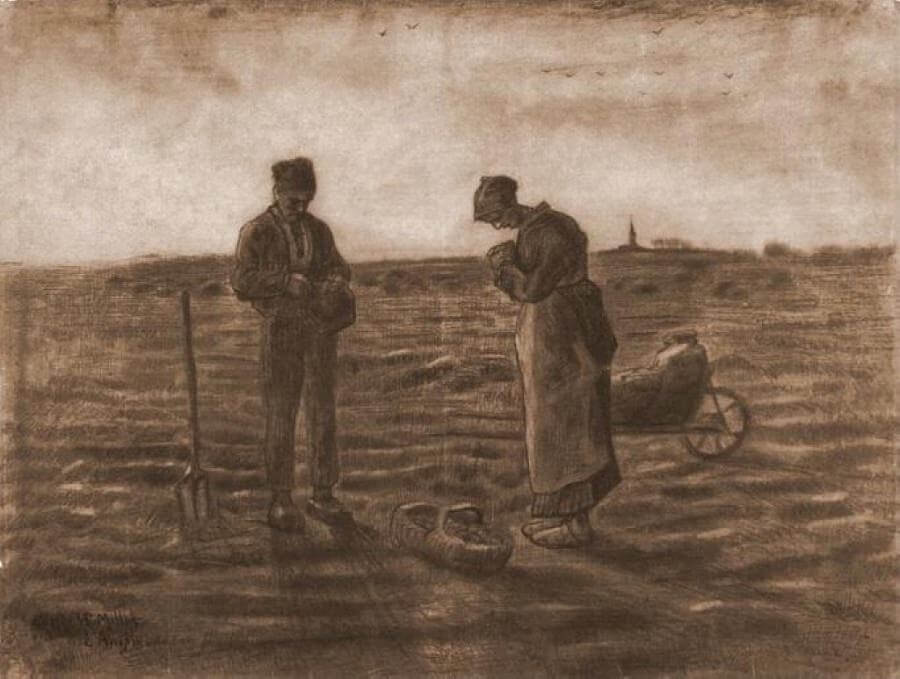The Angelus (after Millet), 1880 by Vincent Van Gogh

The profound influence of the work of Jean-François Millet (1814-1875) upon Vincent van Gogh cannot be overstated. One can find many interesting and diverse influences which play a part in Van Gogh and his art. While Van Gogh admired and studied the works of many artists including Rembrandt and Johannes Vermeer, none even begin to compare to the tremendous impact of Jean-François Millet's works upon Van Gogh's. Van Gogh did a lot of copies of Millet's works. The Angelus (after Millet) is one of them.
Arguably Millet's best-known work, The Angelus depicts a man and a woman standing in the foreground, with heads bowed, the man holds his hat in his hands, and the woman folds her hands in prayer. The man's pitchfork rests in the earth beside him, and, behind the woman, a small cart contains sacks of harvested potatoes. A basket of potatoes rests on the ground between the couple and potatoes dapple the earth at their feet. The sun is setting, but in the distance where a church steeple and part of a village are visible the sky still shows daylight.
Van Gogh began doing studies after Millet works as early as 1880. These early studies helped Van Gogh to learn the disciplines necessary in order to paint. Van Gogh felt that no one could offer him a finer example:
Millet is father Millet . . . counsellor and mentor in everything for young artists, "
- Vincent Van Gogh




















